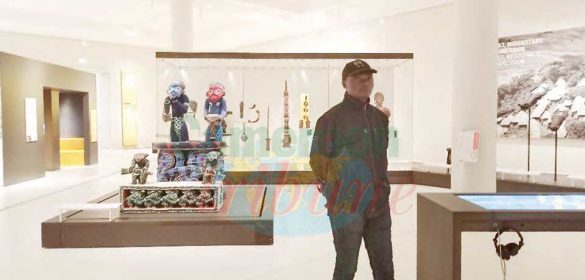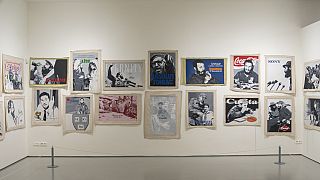On April 13, 2024, a museum opened in Cameroon that celebrates more than 600 years of history through the treasures of the Bamoun Kingdom, one of the oldest kingdoms still in existence on the African continent.
Established in 1384, the Bamoun Kingdom today represents a significant part of Cameroon’s history. Geographically, the Bamoun cultural community spans an area of 7,700 square kilometers (27,973 miles) and has nearly two million inhabitants. The inauguration of this gem enhances the visibility of this kingdom, which is little known outside the region.
Cameroon is a bilingual country where French and English are spoken by 70 percent and 30 percent respectively of a population estimated at over 29 million. The country is home to 270 ethnic groups, each with its own national language, divided into major families: the semi-Bantu, the Bantu, the Semites, the Hamites, and the Sudanese. The Bamoun people belong to the semi-Bantu group, alongside the Kaka, Baya, Widekum, Tikar, Bamiléké, and others.
Historic Museum Bamoun Sultanate Cameroon
In the beating heart of the Western Region of Cameroon, the Historic Museum of the Bamoun Sultanate stands as a testament to the rich tapestry of African heritage and the indomitable strength of the Bamoun people. As the brainchild of architect Issofou Mbouombouo, the museum’s architecture pays homage to the emblem of the Bamoun – a double-headed snake, a spider, and a double-mounted gong. Each element encapsulates the essence of the Bamoun people – strength, wisdom, hard work, and unity.
Perched 1200 meters above sea level and spanning an area of 7.625 km², the Bamoun Sultanate’s roots can be traced back to 1394 AD under the reign of Nshare Yen. Over the centuries, the Sultanate has witnessed the rule of 19 kings, each contributing to the growth and expansion of the kingdom. A significant milestone was achieved during the reign of King MbueMbue in the 1780s, who launched a series of conquests, extending the kingdom’s boundaries and imbuing it with mythical symbols, the snake with two heads, double bells, and spider, which today constitute the arms of the Kingdom.
The 17th king, Njoya, is credited with remarkable achievements such as the invention of a writing system, construction of a grand palace, and the establishment of a museum in 1922, which now boasts one of the richest collections in Africa.
However, the premises of the museum, with its impressive collection of 12,500 artifacts, has outgrown its capacity, leading the current Sultan, Ibrahim Njoya Mbombo, the 19th of the dynasty, to commission the construction of a new, larger museum. This museum, designed by a native architect in close collaboration with the Sultan, seamlessly blends tradition with modernity. Its design is not merely a shelter for artifacts but an artifact in itself, a symbol of the kingdom, even in the absence of exhibits.
The architecture draws inspiration from the kingdom’s emblem:
1- The Double Bell: A symbol of patriotism, it was traditionally used by the King to rally and invigorate his troops.
2- The Spider: Symbolic of industriousness. The King encourages his people to be as diligent as a spider, ceaselessly weaving its web.
3- The Double-Headed Snake: A representation of the Bamoun’s victories on two fronts and a symbol of the kingdom’s power.
In the Historic Museum of the Bamoun Sultanate, each stone, each symbol, each artifact tells a story – a story of a people, a kingdom, and a culture that has weathered the sands of time to stand tall in the annals of African history.














